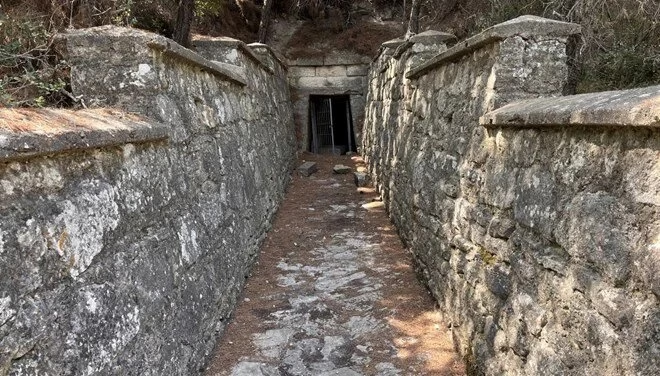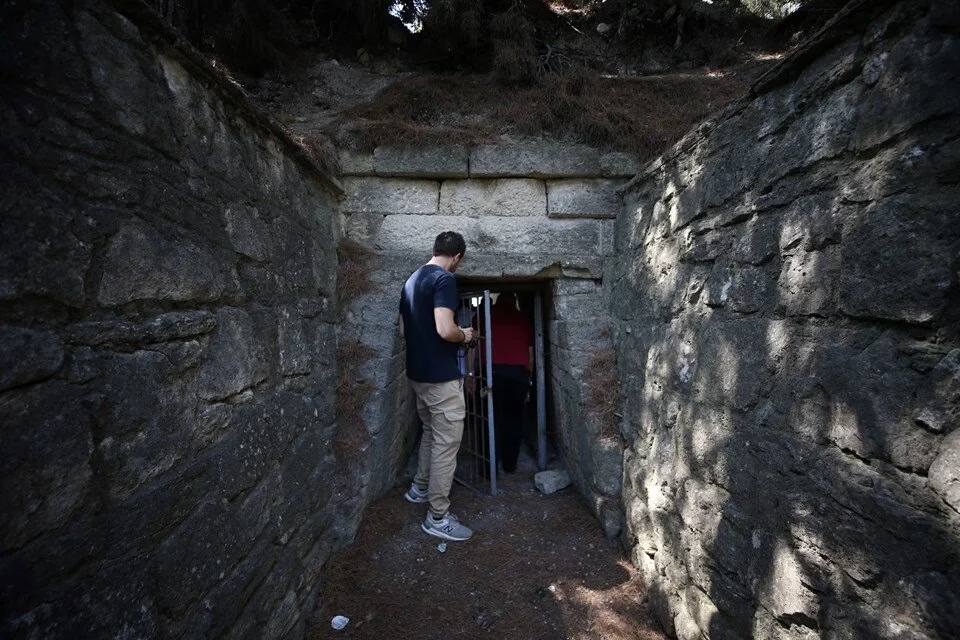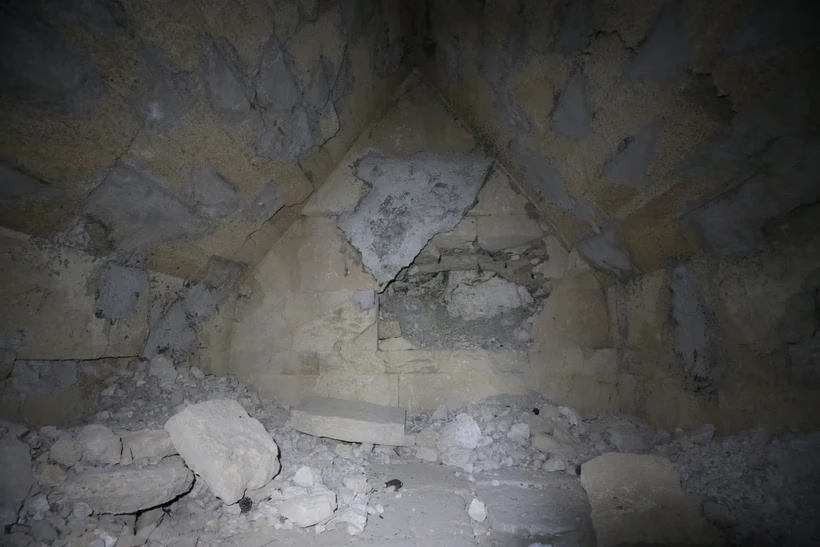The 2,500-year-old Dardanos Tumulus, discovered during construction work at a cement factory in Çanakkale in 1959, is once again under detailed examination by a multidisciplinary team of scholars from Çanakkale Onsekiz Mart University (ÇOMÜ), Oxford University, and other international institutions.
One of the Oldest Burial Mounds in the Troas Region
The tumulus, one of the oldest known in the Troas area, consists of three main sections: a corridor, an antechamber, and the main burial chamber. Initial rescue excavations revealed three sandstone beds and numerous human remains buried using both inhumation (earth burial) and cremation methods.
Alongside these, archaeologists uncovered a rich collection of grave goods, including wooden furniture, silk fabric fragments, gold ornaments, statuettes, baskets, musical instruments, bronze and ceramic vessels, lamps, bone, mother-of-pearl, and glass artifacts. These priceless objects are currently preserved at the Troy Museum.

Collaborative and Multidisciplinary Research Approach
Led by Prof. Dr. Tuna Şare Ağtürk of Oxford University, the research team includes experts in art history, archaeobotany, materials science, epigraphy, and physics. Prof. Ağtürk highlights that the Dardanos Tumulus is comparable in richness to UNESCO-listed sites such as the Gordion King Midas and Vergina King Philip tombs.
The ongoing research involves detailed analysis both onsite and at the museum, with plans for a comprehensive book and an exhibition to showcase the findings.
Innovative Archaeological Discoveries with Modern Technology
Using advanced scientific methods, researchers analyze the contents of vessels to identify ancient medicines and cosmetics. One of the standout artifacts is an Aphrodite statuette, unique worldwide due to its production technique and well-preserved gold embellishments.

Prof. Ağtürk emphasizes that many findings indicate the presence of high-status women who received musical and intellectual education. Detailed studies of gold-embroidered wooden and leather shoes, musical instruments, and textiles reveal insights into the culture and lifestyle of the period.
Expert Insights from International Scholars
ÇOMÜ Rector Prof. Dr. Cüneyt Erenoğlu stresses the significance of the site as both an academic and cultural asset, noting, “This is the royal tomb that gave its name to Dardanos. It also bears the traces of Troy’s civilization.”
Prof. Dr. Sencan Altınoluk from ÇOMÜ’s Faculty of Humanities and Social Sciences points out that Dardanos is one of the earliest settlements in the Troas region. “By studying coins and other finds, we are reconstructing the history of the region,” he says.
Dr. Christos Tersiz from the Austrian Academy of Sciences, specializing in musical instruments, reports that three harp-like instruments found at the site suggest the burial of at least three women, indicating a vibrant musical culture.

Prof. Dr. Maria Stamatopoulou from Oxford University adds, “The Dardanos Tumulus is an invaluable resource not only for the Troas region but also for Mediterranean archaeology. The preservation of organic materials offers a rare glimpse into the production methods and daily lives of its ancient inhabitants.”
Looking Ahead: Cultural Heritage and Exhibition Plans
Following the completion of research, the team plans to publish a detailed book and organize a dedicated exhibition focused on Dardanos. This project aims to enrich the cultural and historical heritage of both Çanakkale and the wider archaeological community.
With concerted efforts from ÇOMÜ and international experts, the Dardanos Tumulus is poised to become a prominent center of culture and civilization.
Cover Photo: The research team conducting the study includes Prof. Dr. Tuna Şare Ağtürk (Oxford University), Prof. Dr. Cüneyt Erenoğlu (Rector of ÇOMÜ), Prof. Dr. Sencan Altınoluk (ÇOMÜ), Dr. Christos Tersiz (Austrian Academy of Sciences), and Prof. Dr. Maria Stamatopoulou (Oxford University). Credit: AA





